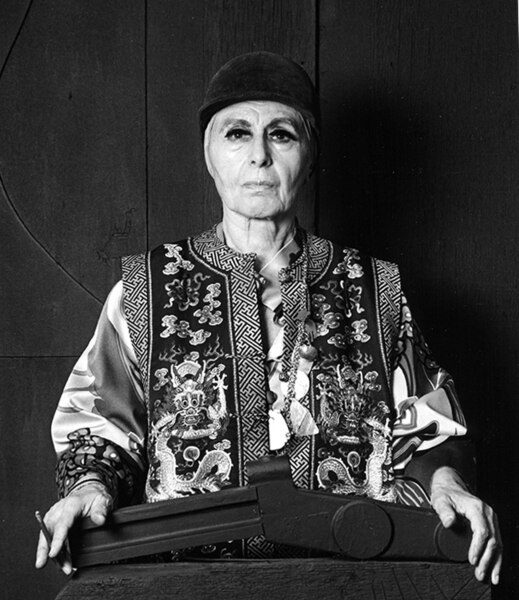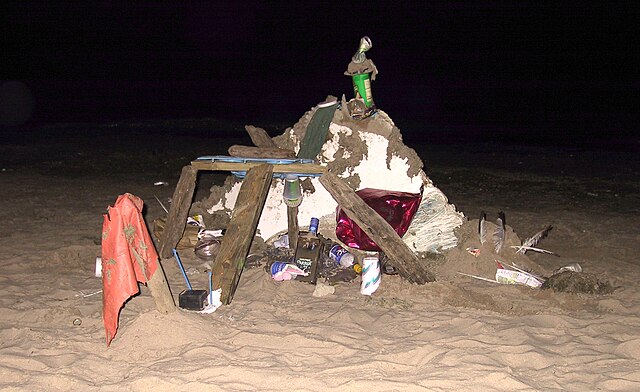Louise Nevelson was an American sculptor known for her monumental, monochromatic, wooden wall pieces and outdoor sculptures. Born in the Poltava Governorate of the Russian Empire, she emigrated with her family to the United States in the early 20th century. Nevelson learned English at school, as she spoke Yiddish at home.
Nevelson in 1976
Nevelson (fourth from left) posing for a class portrait with her classmates, 1913, unidentified photographer. Louise Nevelson papers, Archives of American Art, Smithsonian Institution
Clown tight rope walker by Louise Nevelson, c. 1942 (John D. Schiff, photographer, Louise Nevelson papers, Archives of American Art, Smithsonian Institution)
Louise Nevelson and granddaughter Neith Nevelson, c. 1965
A found object, or found art, is art created from undisguised, but often modified, items or products that are not normally considered materials from which art is made, often because they already have a non-art function. Pablo Picasso first publicly utilized the idea when he pasted a printed image of chair caning onto his painting titled Still Life with Chair Caning (1912). Marcel Duchamp is thought to have perfected the concept several years later when he made a series of ready-mades, consisting of completely unaltered everyday objects selected by Duchamp and designated as art. The most famous example is Fountain (1917), a standard urinal purchased from a hardware store and displayed on a pedestal, resting on its back. In its strictest sense the term "ready-made" is applied exclusively to works produced by Marcel Duchamp, who borrowed the term from the clothing industry while living in New York, and especially to works dating from 1913 to 1921.

Marcel Duchamp, Fountain, 1917. Photograph by Alfred Stieglitz
Alphonse Allais, Des souteneurs encore dans la force de l'âge et le ventre dans l'herbe boivent de l'absinthe, carnage curtain, before 1897.
An Oak Tree by Michael Craig-Martin; 1973
Junk art at Oak Street Beach








